Antennas and Beyond!
Advanced RF Edge
Delve into the cutting edge of antenna design. This section explores industry trends, insightful case studies, and advanced technical insights to empower antenna professionals.
-
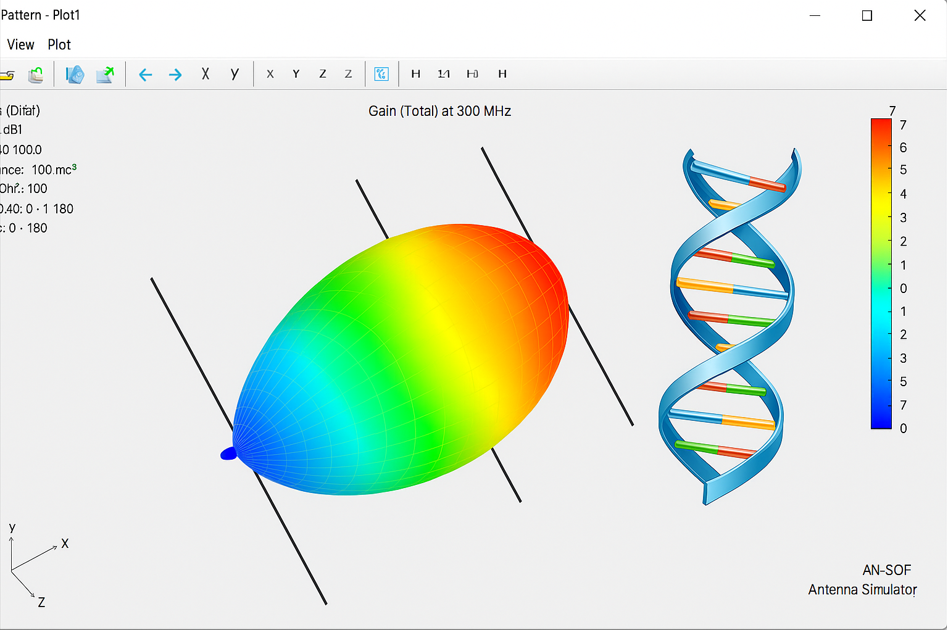
Evolving Better Antennas: A Genetic Algorithm Optimizer Using AN-SOF and Scilab
Learn to optimize antennas with genetic algorithms using AN-SOF and Scilab. Includes ready-to-use scripts for population evolution and cost functions targeting gain, VSWR, and front-to-back ratio in a 3-element Yagi-Uda design.
-

Building Effective Cost Functions for Antenna Optimization: Weighting, Normalization, and Trade-offs
Master cost function design for antenna optimization: weighting strategies, parameter normalization, and performance trade-offs. Practical methods to balance gain, VSWR, and impedance matching in your designs.
-
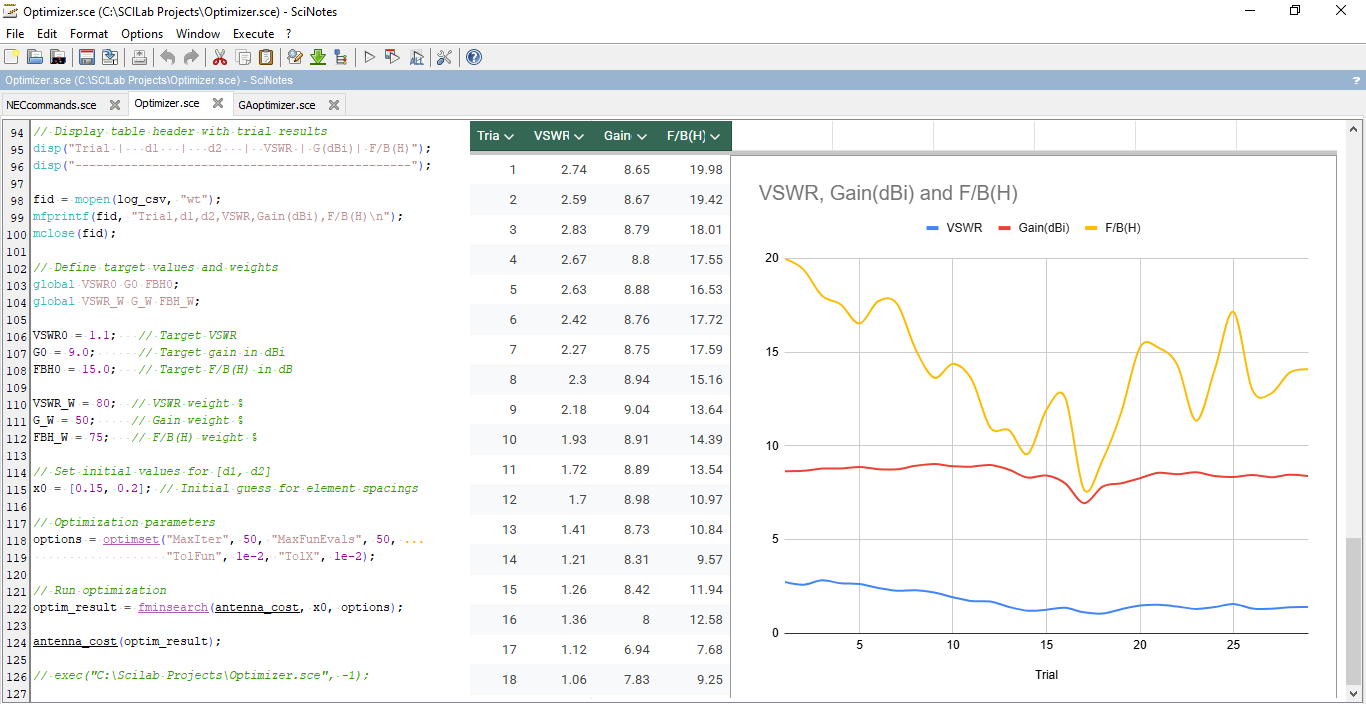
Nelder-Mead Optimization for Antenna Design Using the AN-SOF Engine and Scilab
This article presents a Nelder-Mead optimization workflow for antenna design using AN-SOF Engine and Scilab. We demonstrate automated Yagi-Uda tuning via weighted cost functions, covering script implementation, NEC file modification, and result analysis for VSWR, gain, and front-to-back ratio optimization.
-
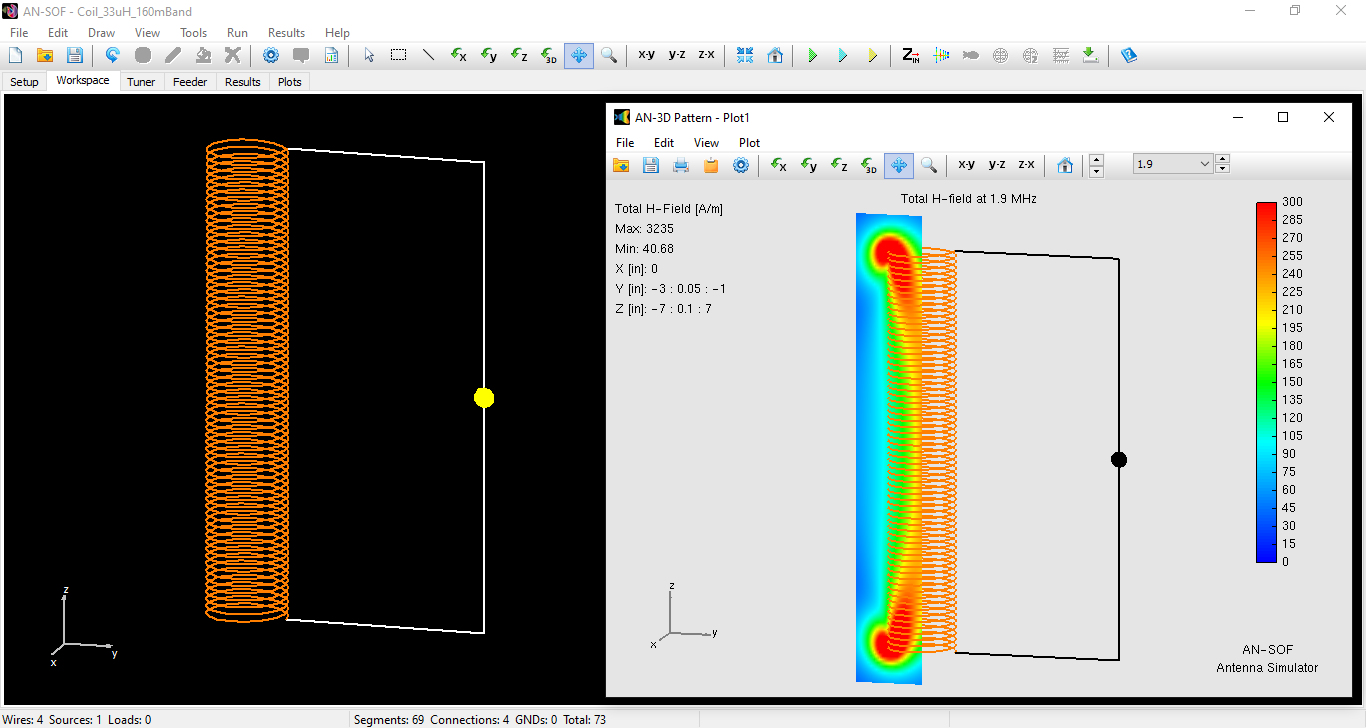
Beyond Analytical Formulas: Accurate Coil Inductance Calculation with AN-SOF
Traditional coil inductance calculations often rely on simplified approximations. AN-SOF offers a more accurate approach by considering factors like non-uniform magnetic fields, conductor losses, and complex coil geometries. By using AN-SOF, you can obtain precise inductance values, visualize magnetic field and current distributions, to improve your coil designs.
-
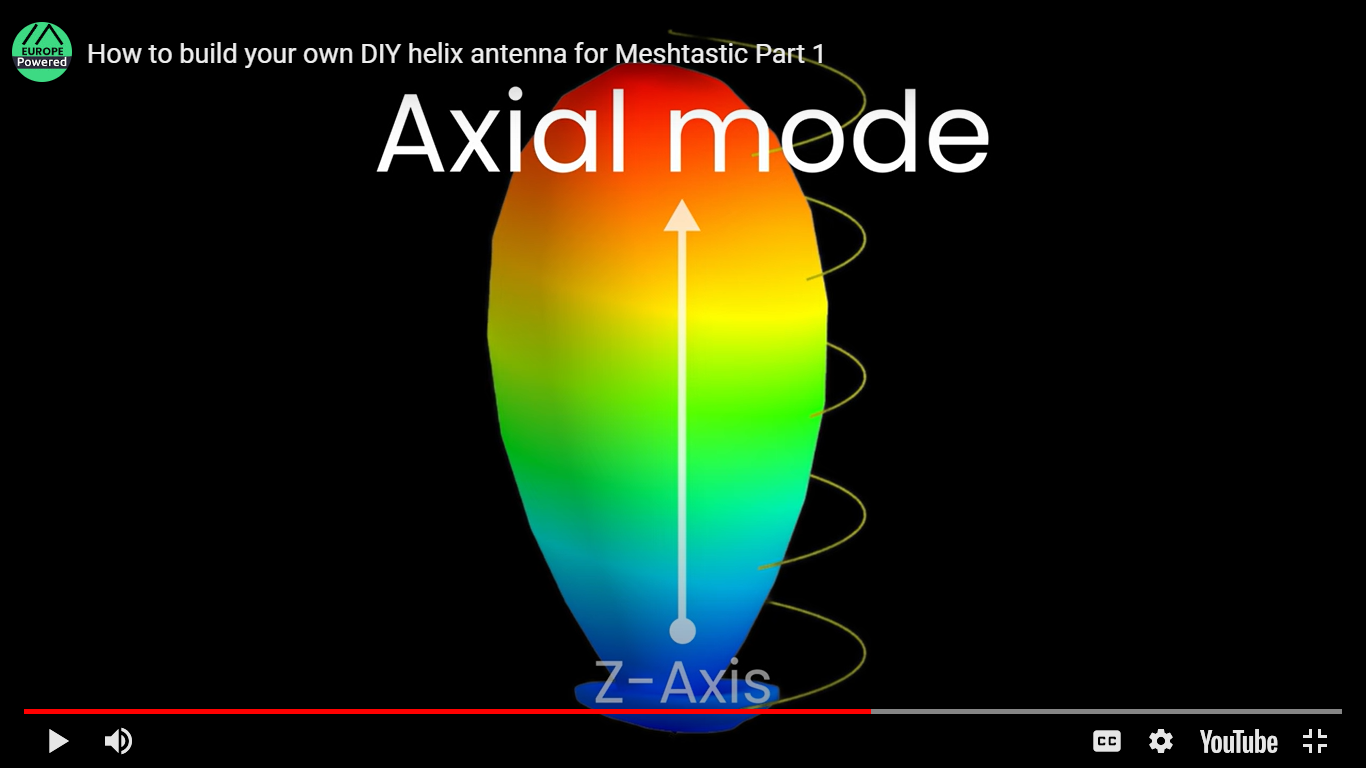
DIY Helix High Gain Directional Antenna: From Simulation to 3D Printing
We are happy to share an interesting project by one of our AN-SOF users: @PoweredMeshtasticEurope. He demonstrates how to build your own helix high gain directional antenna for the Meshtastic frequency range, from theory to reality.
-
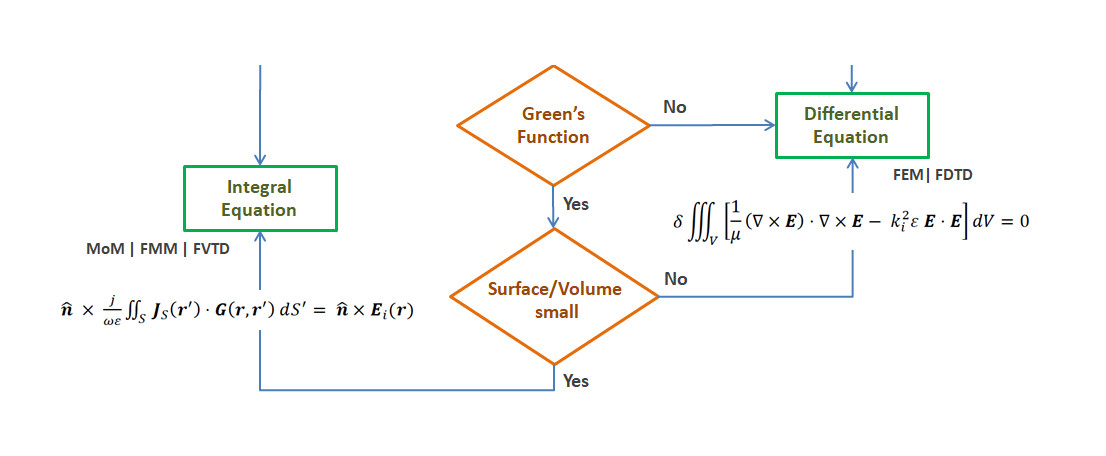
Navigating the Numerical Landscape: Choosing the Right Antenna Simulation Method
In this article, we provide an overview of various numerical methods used in Computational Electromagnetics (CEM), with a special focus on antenna simulation methods such as FDTD, FEM, MoM, CMoM, FMM, MLFMM, FVTD, GO, GTD, UTD, PO, PTD, and DDM.
-
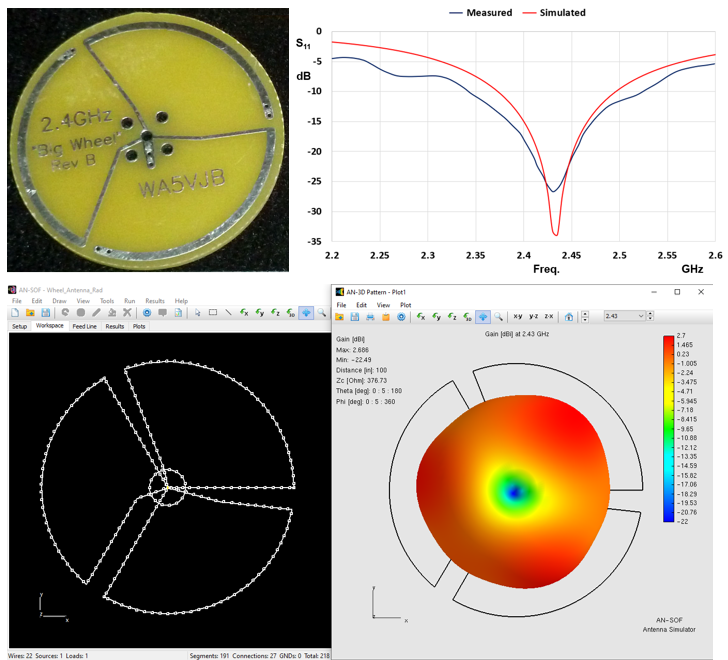
Accurate Analysis of Solid Wheel Antennas at 2.4 GHz Using Cost-Effective Simulation
Revolutionize antenna modeling with our simplified method. Accurately simulate 2.4 GHz wheel antennas for optimal performance.
-

Simplified Modeling for Microstrip Antennas on Ungrounded Dielectric Substrates: Accuracy Meets Simplicity
Discover a simple yet precise method for modeling microstrip antennas on ungrounded dielectric substrates.
-

AN-SOF Implements James R. Wait Theory for Ground Losses of LF/MF Radio Masts
AN-SOF introduces an innovative method based on James R. Wait theory to accurately compute ground losses, improving monopole antenna design. Explore the validated model for LF/MF radio masts.
-
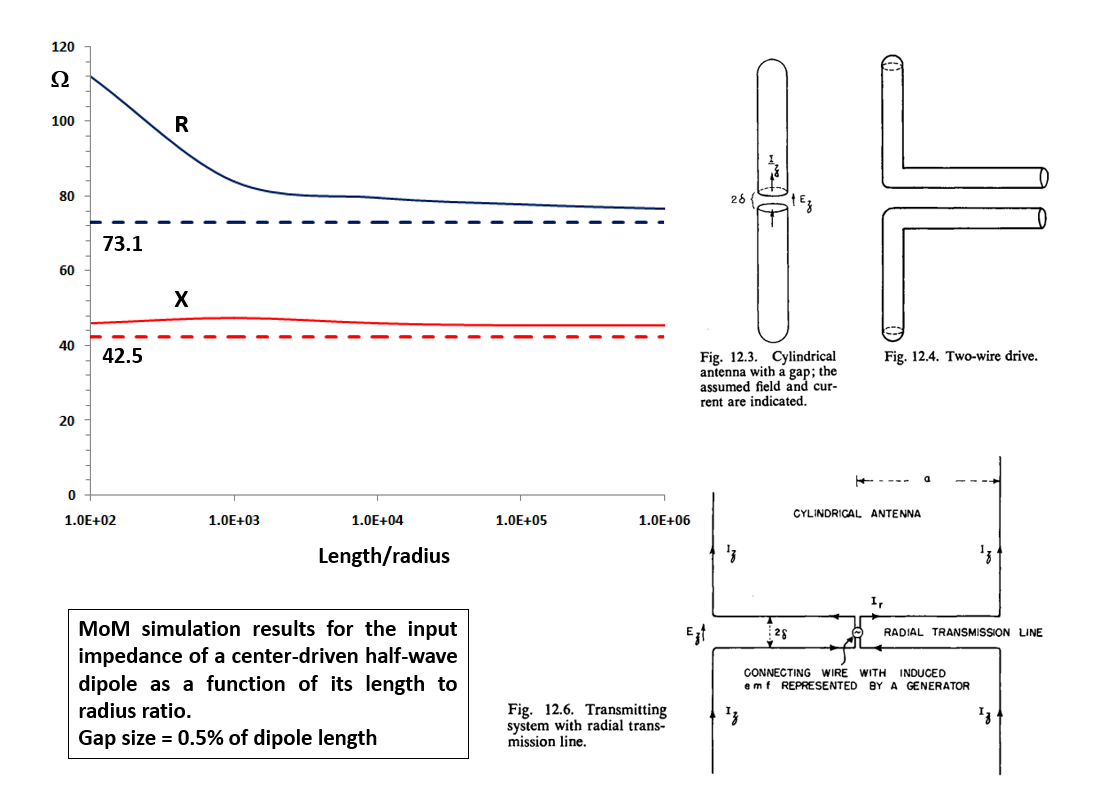
Linear Antenna Theory: Historical Approximations and Numerical Validation
Discover the vital role of historical theoretical results alongside advanced numerical calculations in accurately approximating current distribution on linear antennas.
-

Wave Matching Coefficient: Defining the Practical Near-Far Field Boundary
Discover how the Wave Matching Coefficient (WMC) redefines near-far field boundaries. Using a 20 dB threshold, we uncover new distances for elementary antennas and a consistent method to define non-spherical boundaries for antennas of any size or complexity relative to the wavelength.
-
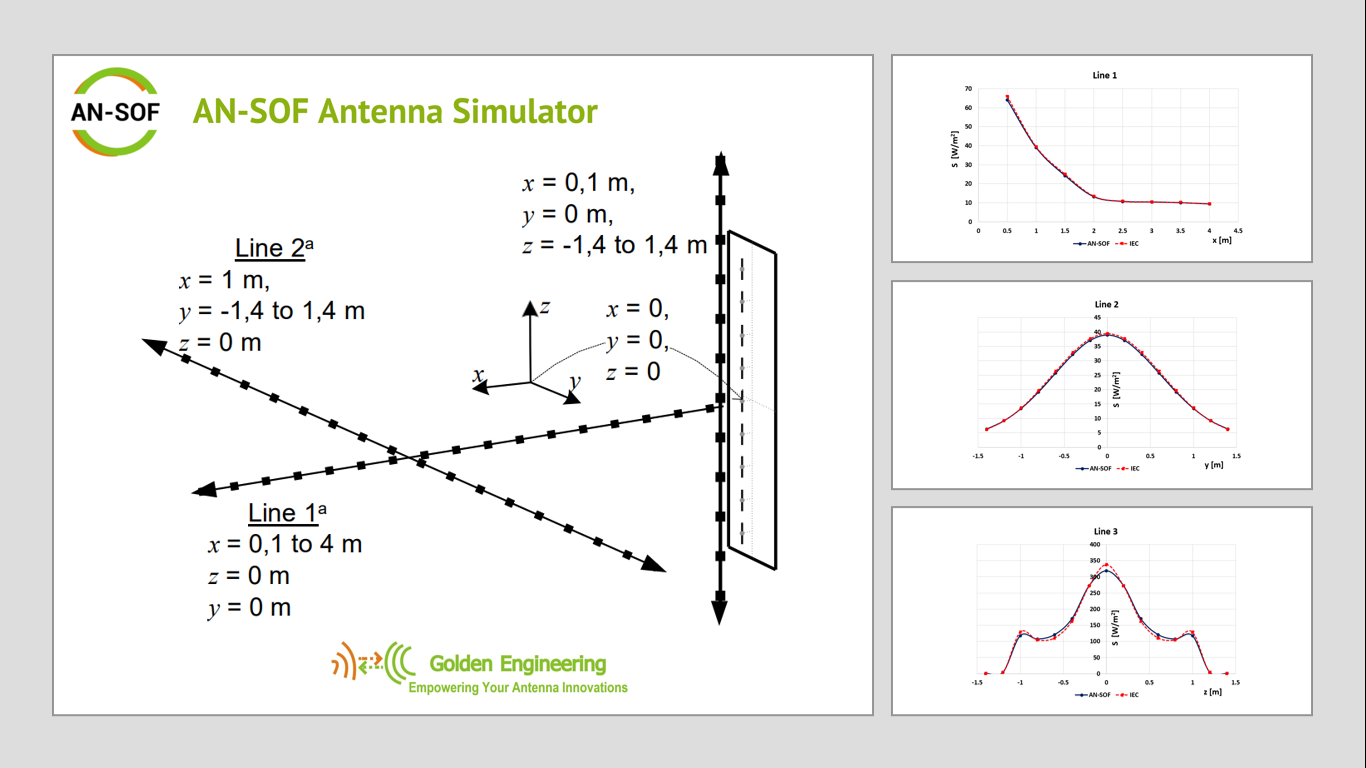
Validation of a Panel RBS Antenna with Dipole Radiators against IEC 62232 Standard
This article validates AN-SOF’s results against the IEC FDIS 62232 standard by replicating an RBS panel antenna model with nine dipole radiators. The successful validation highlights AN-SOF’s ability to deliver highly accurate results, even with relatively simple models.
-
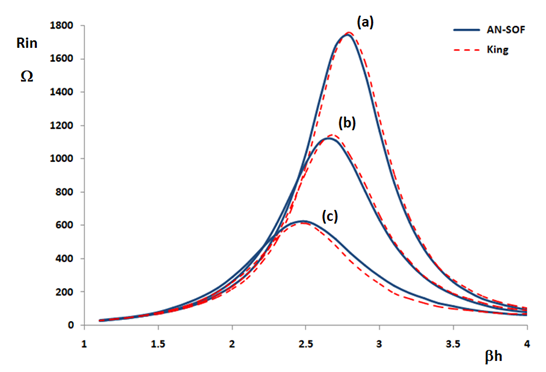
Validating Dipole Antenna Simulations: A Comparative Study with King-Middleton
This article presents a comprehensive comparison between AN-SOF’s dipole antenna simulations and the renowned King-Middleton second-order solution. Through rigorous analysis and numerical experiments, we validate the accuracy and reliability of AN-SOF in predicting dipole antenna input impedance.
-
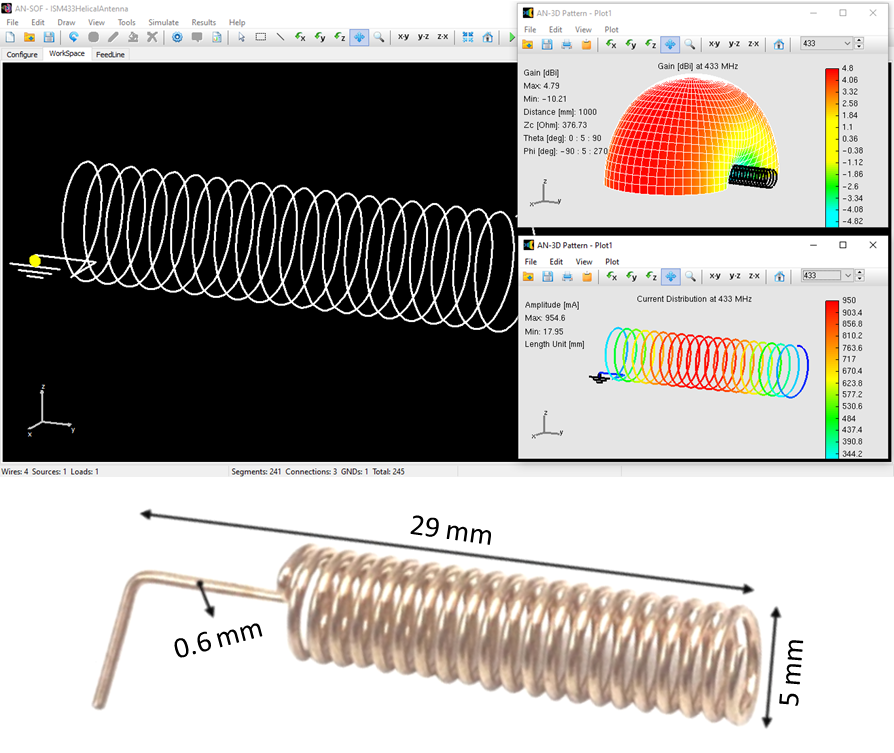
Advantages of AN-SOF for Simulating 433 MHz Spring Helical Antennas for ISM & LoRa Applications
Struggling with complex helical antenna designs for LoRa & ISM? AN-SOF overcomes limitations of traditional methods, enabling accurate simulations of 433 MHz spring helical antennas.
-
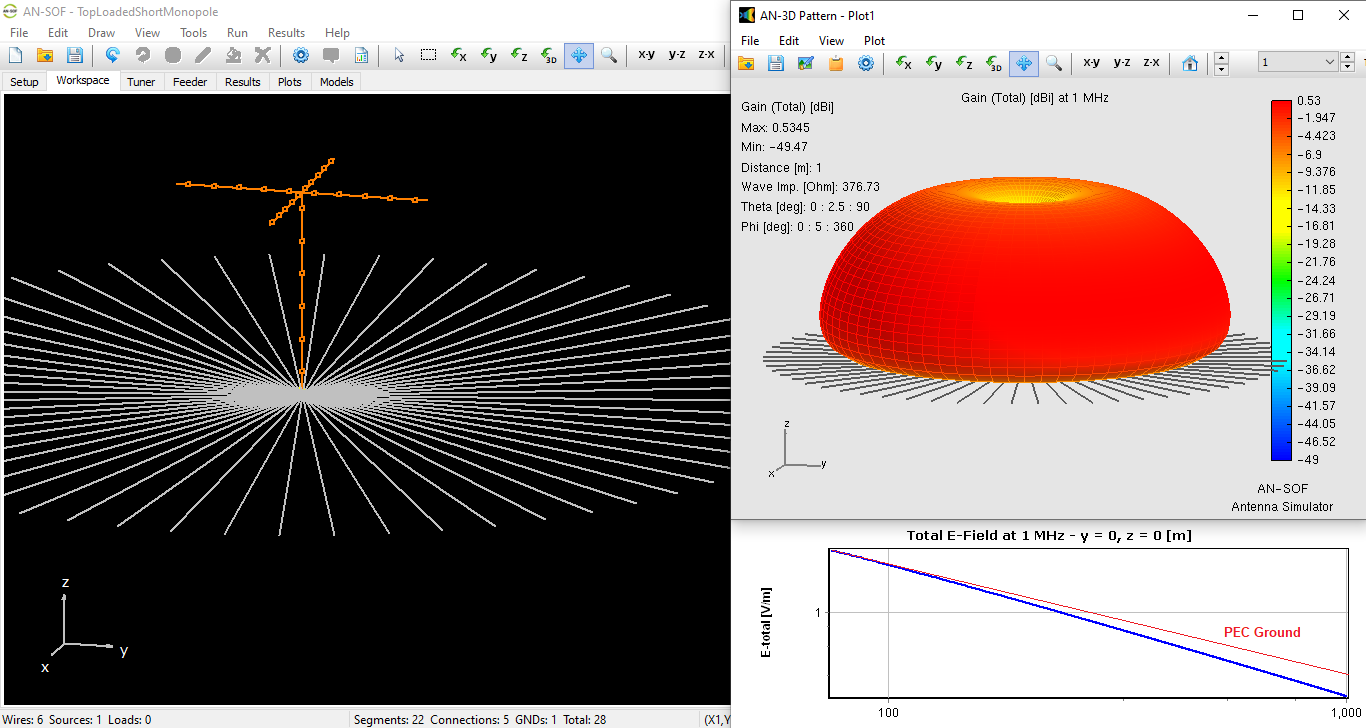
Design and Simulation of Short Top-Loaded Monopole Antennas for LF and MF Bands
This article explores the design and simulation of compact top-loaded monopole antennas for LF and MF bands, highlighting efficiency optimization through top-loading and radial ground screens using AN-SOF. Ideal for AM broadcasting and low-frequency communications.
-
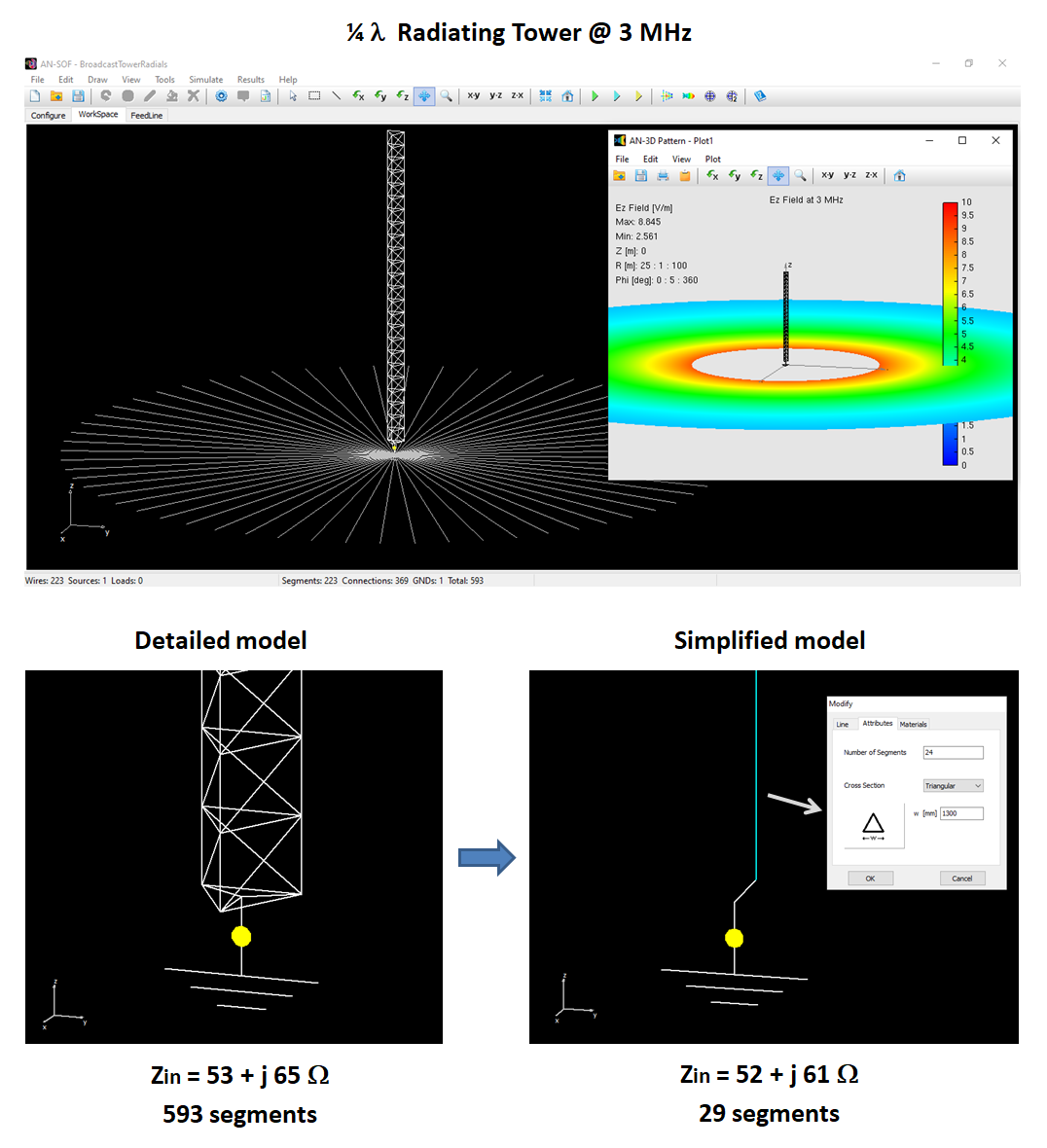
An Efficient Approach to Simulating Radiating Towers for Broadcasting Applications
Learn an efficient method to simulate radiating towers for broadcasting applications. This article explores detailed modeling and a simplified approach for analyzing radio mast designs, calculating near-field patterns with minimal effort, and applying these techniques to real-world antenna systems.
-
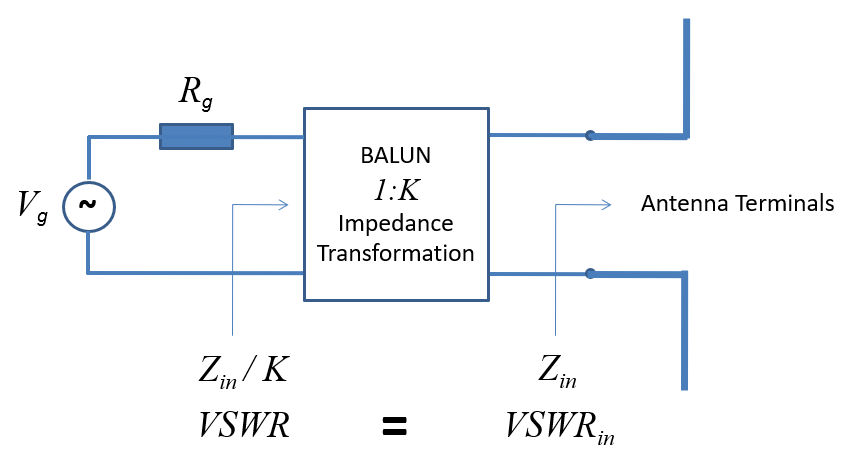
RF Techniques: Implicit Modeling and Equivalent Circuits for Baluns
Explore how AN-SOF simplifies the process of modeling transformers and baluns with implicit techniques. Learn to transform antenna impedance using equivalent circuits. A must-read for engineers and RF enthusiasts!
-
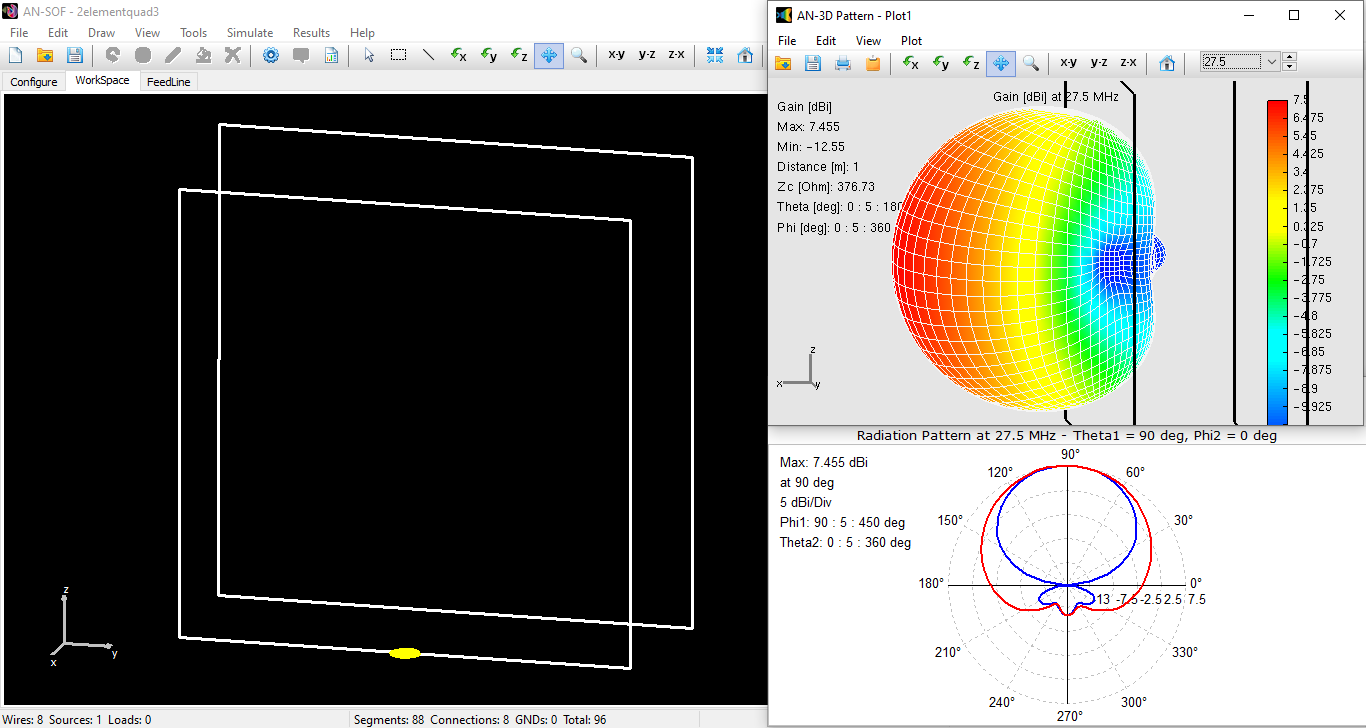
Automating 2-Element Quad Array Design: Scripting and Bulk Processing in AN-SOF
Struggling to design optimal 2-element quad arrays? This article explores automating the process using Scilab scripts and AN-SOF’s bulk processing. Generate & simulate multiple configurations with varying element spacing, saving time and uncovering potential performance improvements!
